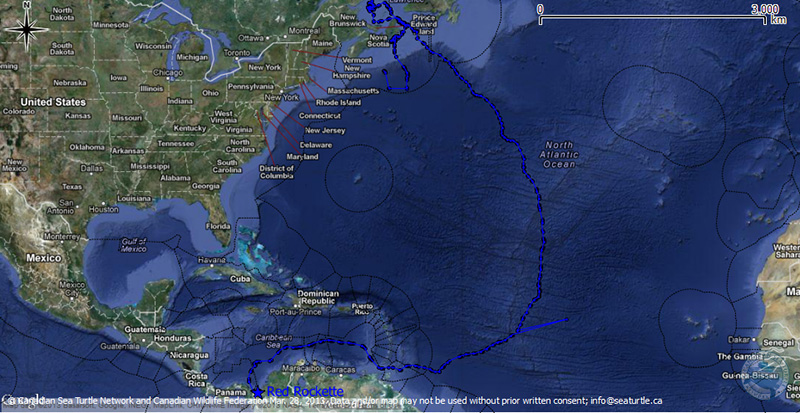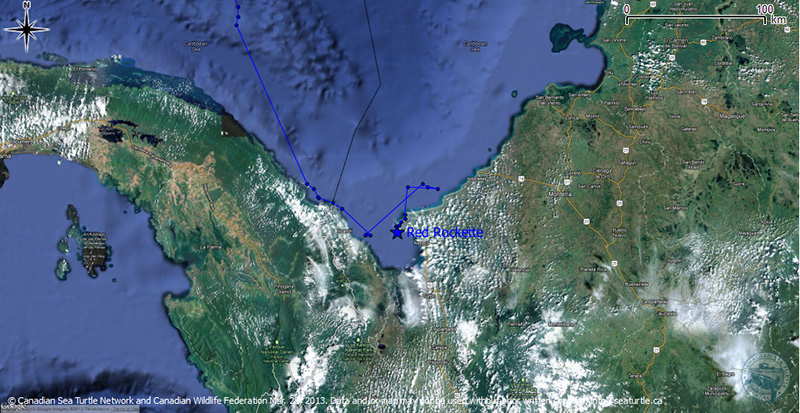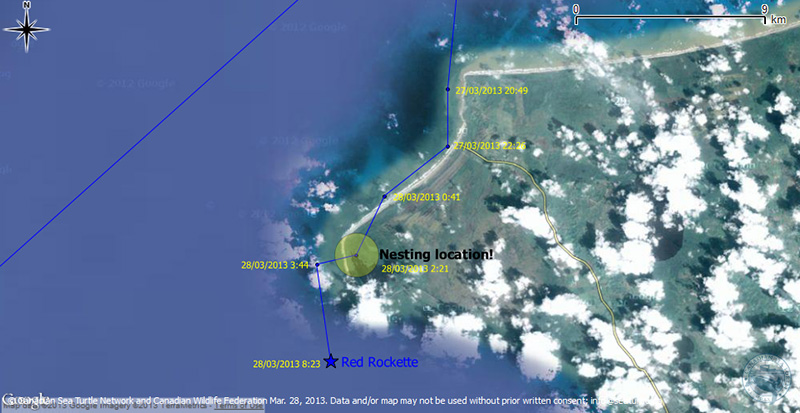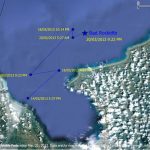In the early hours of this morning, Red Rockette nested on a beach in Colombia called Bobalito, near the community of Necoclí.
We are thrilled!
The first of the maps below shows her whole track—all the way from Nova Scotia to Colombia. The second is a closer view of her more recent positions in relation to the Colombian coast. The third—my favourite—shows her movements between 8:49 p.m. COT (Colombia time, which is 10:49 p.m. Halifax time) yesterday evening and 8:23 a.m. COT (10:23 a.m. Halifax time) today.



This turtle, whose movements are being watched so carefully by so many of us, laid her first nest without encountering a human. And although there is something lovely about imagining her alone carefully carving out that nest in the moonlight, we want someone to find her next time. We want her satellite tag back!
Leatherbacks nest several times a season. Red Rockette will come back to land to nest again in a week or so. We are lucky to have help from our friends at the Conservación Ambiente Colombia Foundation (CACF). CACF supports a relatively new sea turtle program at Bobalito Beach. Community leaders from the village of El Lechugal—which used to poach almost all of the nesting turtles—launched a conservation program at Bobalito to protect the animals, engaging their community in projects like sea turtle monitoring and environmental education.
Thanks to our colleagues at CACF, the community had already begun patrolling Bobalito in anticipation of Red Rockette nesting—long hours of walking slowly up and down the many kilometers of beach. However, now that we know Red Rockette has nested on Bobalito once already, even more community members will begin patrolling the beach to increase our chance of finding the turtle next time.
It is difficult to communicate with Bobalito—there is minimal cell coverage and Internet access. But CACF is working hard on our behalf to establish a communication chain that will allow our updates of Red Rockette’s positions to reach the community quickly.
Now we have to hope for a couple of things: We have to hope that Red Rockette’s satellite tag keeps transmitting and we have to hope that she chooses to nest on Bobalito again. If she moves even a little to the east near the community of Mulatos the odds of finding her aren’t as good. The beach at Mulatos is very long and the sea turtle program there is only just beginning.
So now—again—we wait!


This is terrific news. I’m so glad that a young conservation program in Colombia gets the chance to realize the truly international importance of their work.
We are, too!